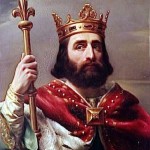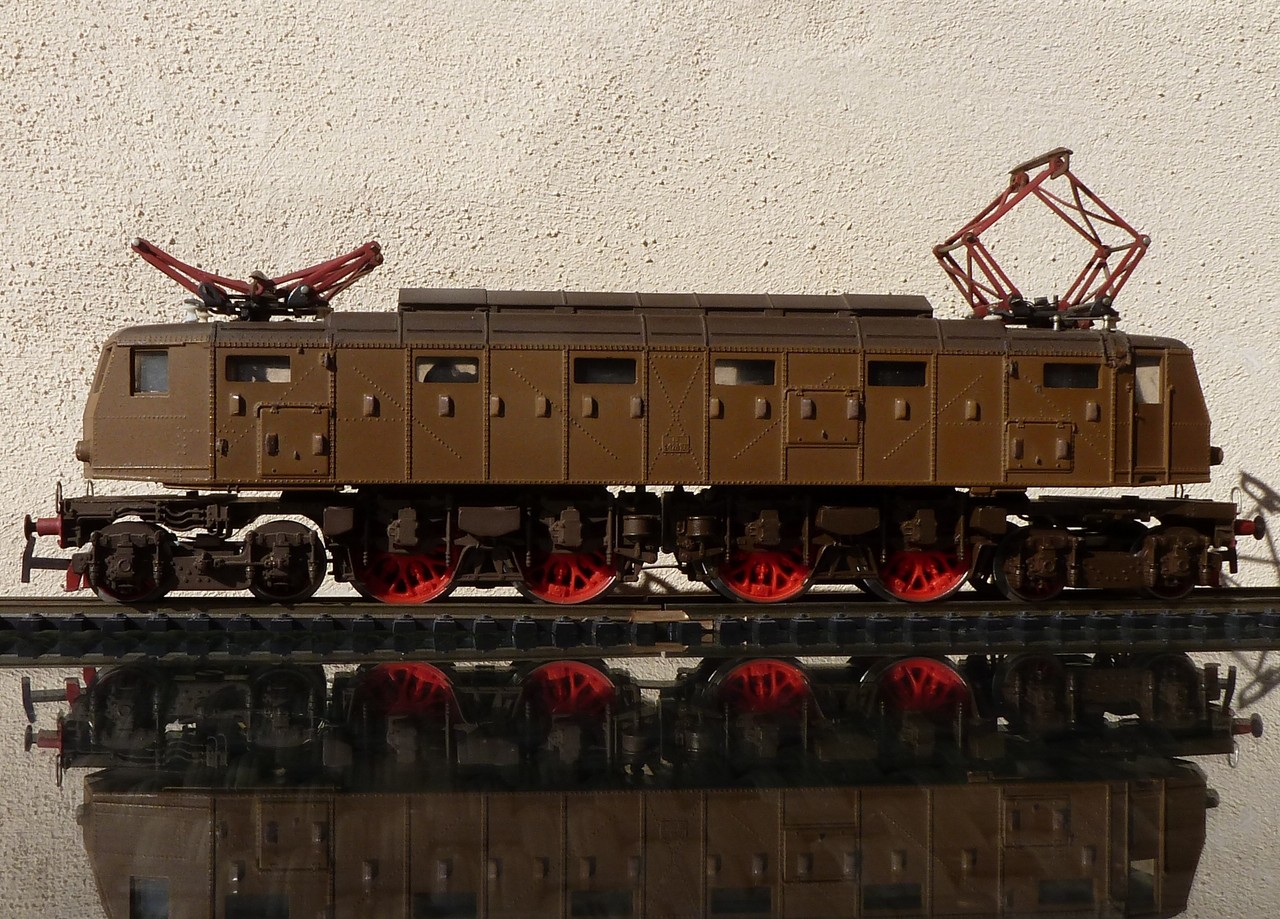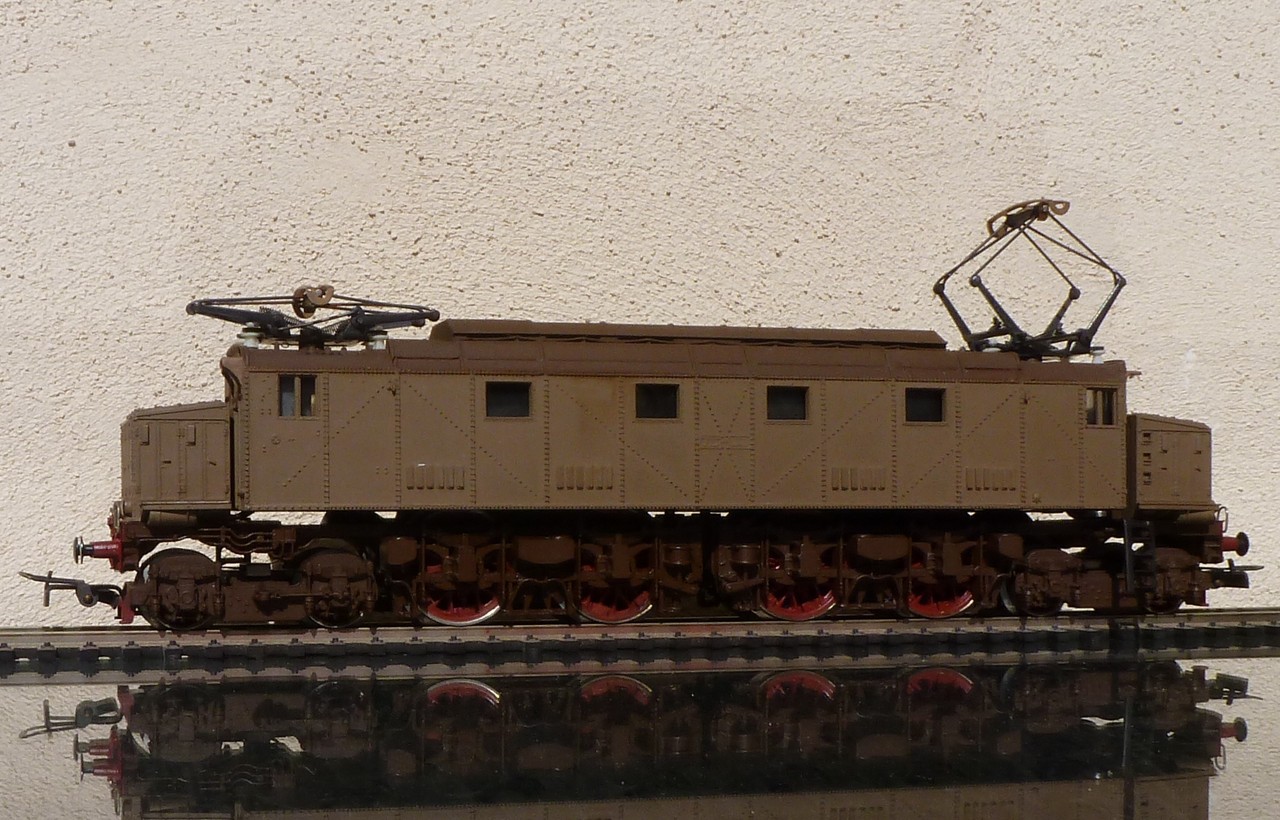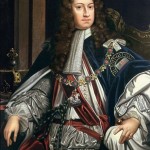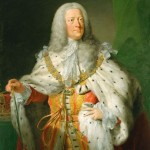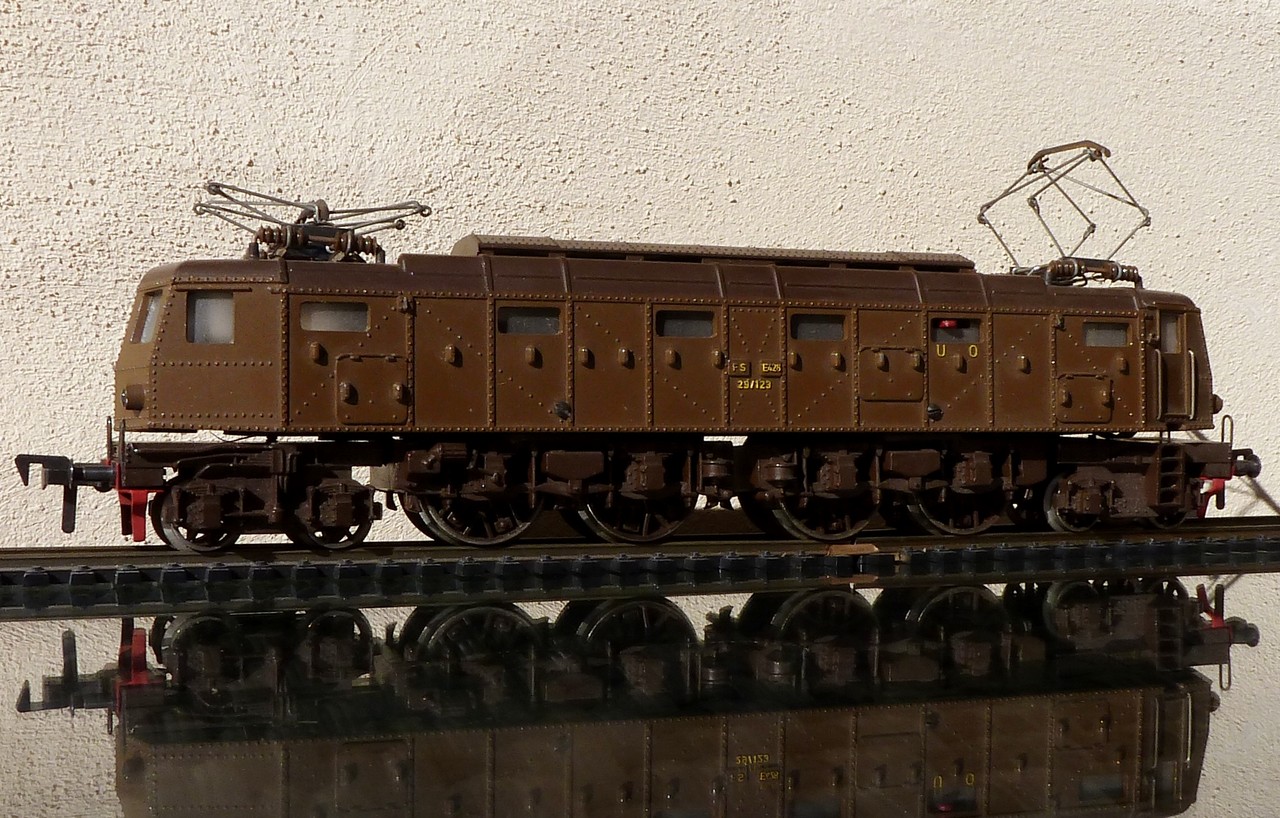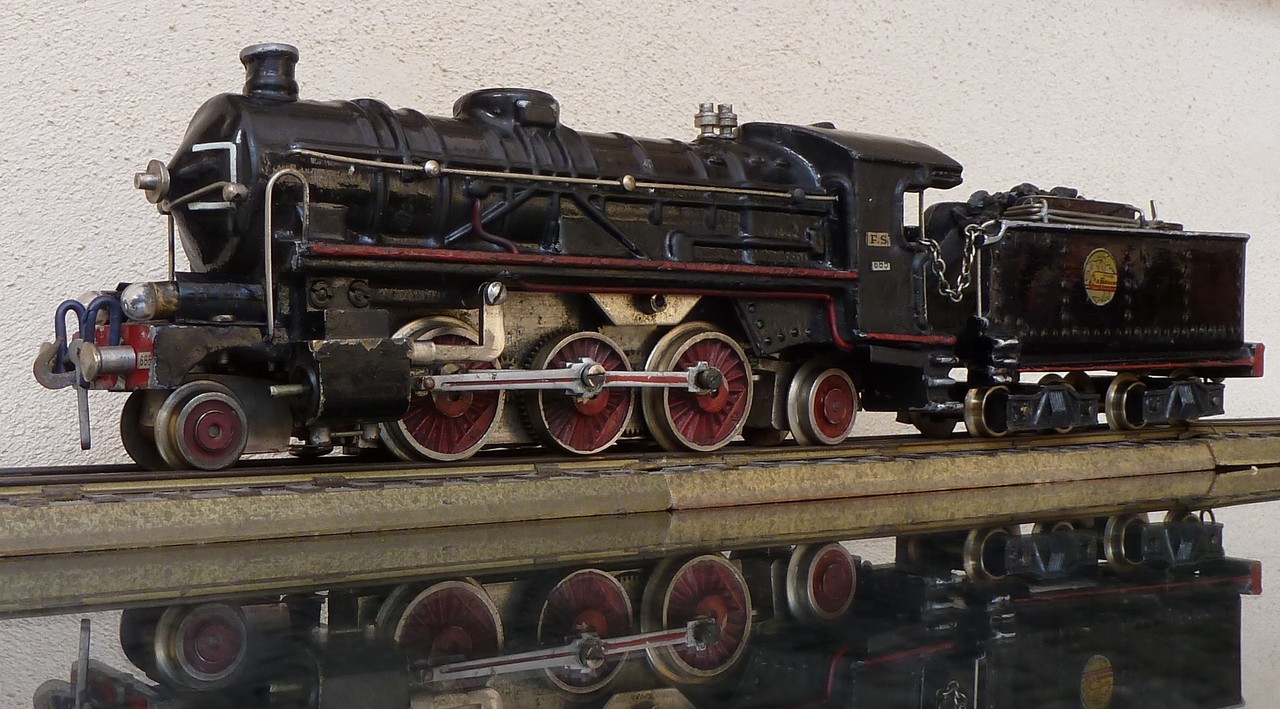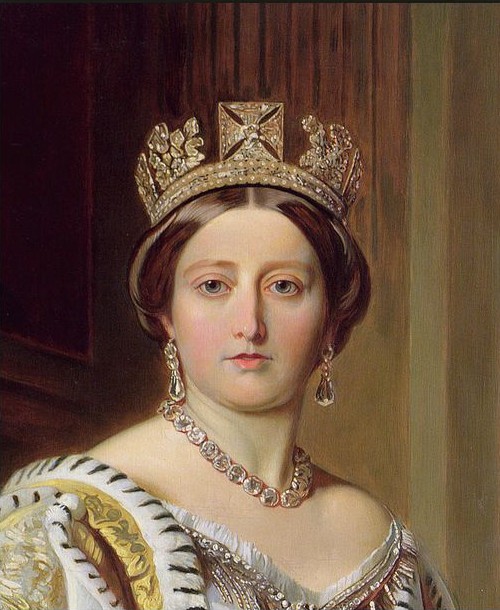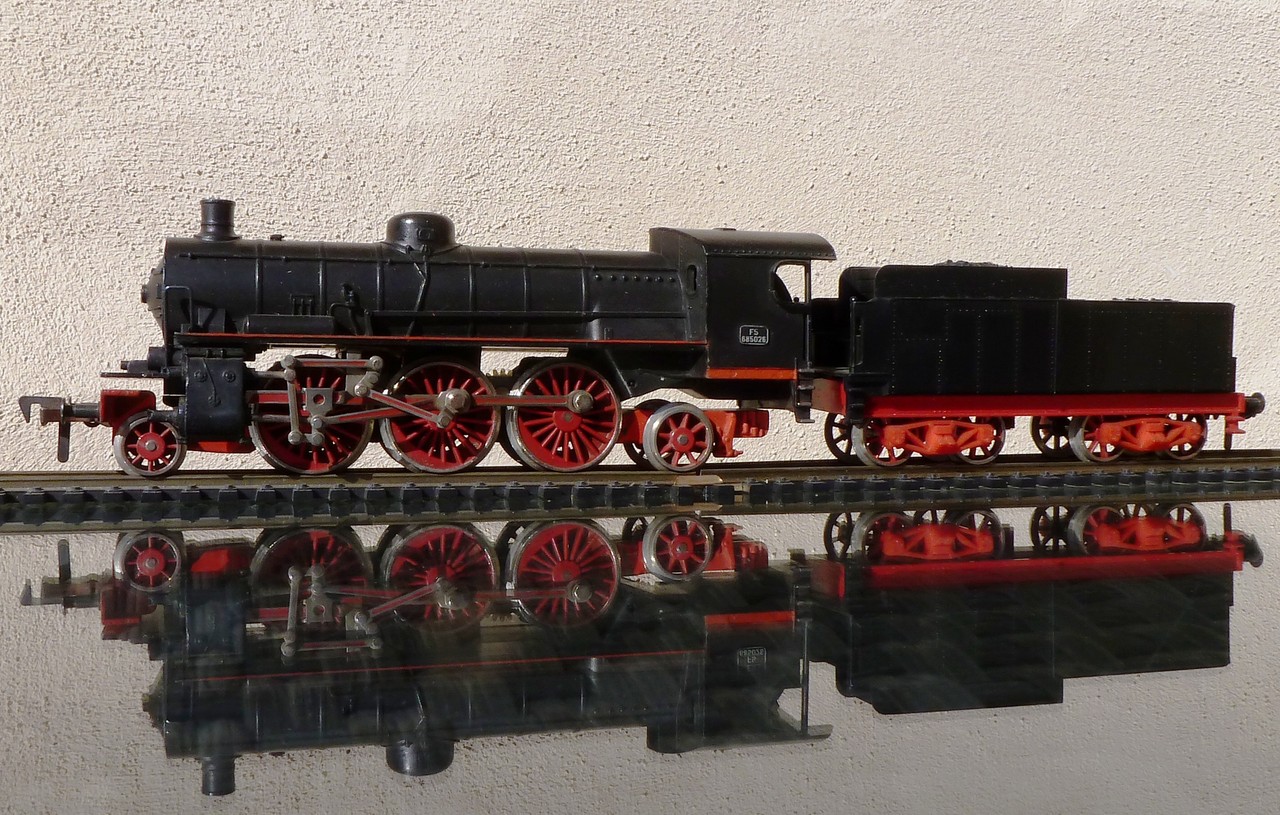The King and Queen
Pairing of an art-work on rails Conti and PVZ with the bronze sculpture “The King and Queen” by Maurizio D’Agostini
(Courtesy of P.G.)
Other Kings and Queens
- Elisabetta Prima
- Mary Stuart
- Elisabetta Seconda
- Queen Victoria
- Carlo Alberto
- Vittorio Emanuele Secondo
- Umberto Primo
- Vittorio Emanuele Terzo
The E 428 HO / OO scale from the 40s to the 60s
The real E 428 were built since the 30s in four series. Designed to tow fast trains, reigned undisturbed at the top of the FS fleet until the advent of E 646 in the 60s, then they were gradually relegated to minor services.
They belong to the European family of electric machines with four large drive wheels and bogies with two axles, who served mainly
in France and in Italy.
In France, the family of so-called “2D2”reproduced in HO scale in the years 50s had numerous variants and from different manufacturers
as JEP
and Allard
-
Pipino III Il Breve
-
Carlo Magno
- Pipino III Il Breve
- Carlo Magno
Returning to E 428, the first scale model of this majestic locomotive appears in the immediate post-war by the PVZ, which makes a model of the third series of the FS, also called “semi-aerodynamic”.
Moreover, it is curious that, until 1966, all models made, belong to the series “semi-aerodynamic”.
The model PVZ, quite generous in scale, is all-metal with steel, bronze, brass and zamak parts.
It is produced in two versions
that differ in some details of the bodywork, the pantographs, the frame and the engine.
The photo taken from below
shows the most important differences between the two versions:
– In the first version, engine transmits motion to the four axes via connecting rods (Oh yes !! … Just like in the “three-phase” FS), the axes are fixed to a single frame, have no side movements and, to allow circulation in the curve, the two plants do not have border.
– In the second version the two carriages are mounted on pivots, and can rotate only on an engine with the motion transmission through gears.
All wheels have the edge.
The 428 PVZ was also proposed in a set with six splendid bogie wagons in metal, strange thing, as at the time this locomotive was hauling passenger trains almost exclusively ….

The 428 Rivarossi appears for the first time in the new catalog of 1960 with the reference 428 / R.
Contrary to the image of the catalog, the first version has no stairs leading to the cabins and sheet metal windbreak between the front of the case and the frame. Equipped with pressed sheet pantographs with simple red creeping , the same adopted for the first time, the previous year, on the 626 Collectors series.
Following the tradition began with the 626, the side plates, which at the real carry the name of the manufacturer, shall bear the marking “Rivarossi”

In the first year of production, the color of the body had variations in shades of the color “Isabella” as it was then called
In 1961, at the locomotive were added ladders and laminations windbreak, in 1966 the pantographs “type 52” were blacks.
In 1966 saw the light 428 of the first series with bellies,
but only in the 70s arrived the fourth series
In 1960, appears on the market also the 428 Fleischmann.
-
Giorgio Primo – Hannover
-
Giorgio Secondo – Hannover
-
Giorgio Terzo – Hannover
-
Giorgio Quarto – Hannover
- Giorgio Primo – Hannover
- Giorgio Secondo – Hannover
- Giorgio Terzo – Hannover
- Giorgio Quarto – Hannover
The locomotive was all-metal, with running gear in four carriages, contrary to the model Rivarossi, is devoid of semi-frames. The engine is very good, in line with the traditional Fleischmann.
It is produced until 1971 in four versions:
– First version
body dark brown, brown wheels, pantographs nickel simple creeping
– Second version
As above, but body color “isabella”
– Third version
body duller shades, red wheels, wipers for windows
– 4th version
body lighter shade, various details added, red wheels, pantographs burnished dual creeping.
In 1960 Favero Trains announced its 428, probably delivered in 1961, with the superstructure that copy the model Rivarossi, including errors …. The mechanic, however, is very different, with traction on only one axis.
It is produced in two versions, which differ in certain details, hooks, pantographs and the lower part of the carriages.
The reproductions in scale HO / OO of 685 FS in the 50s and 60s
Built since 1912, the 685 incorporated in the 20s the transformed 680 and until the 60s serviced on the main Italian lines. The locomotives were fast and cheap, good performance that made them versatile and appreciated.
The first model of this locomotive in OO scale , to tell the truth rather “plentiful”
is the 685 Conti.
Built in 1950 in small numbers using molds for casting is a “toy” full of charme that, in its reproduction rather approximate of the prototype, expresses well the elegance and the feeling of power of the original machine.
The mechanism is constituted by a cascade of gears supported by the steel frame, the connecting rods are made in aluminum, the central wheels have a rim reduced or missing to facilitate the entry in the curve.
Were added details such as chains, tools for fire, and the interior image of the cab further enhance the charm of this locomotive.
For those wishing to learn more, refer to excellent book and handouts of’ friend Carlo Costamagna.
The sale of this locomotive ceased in 1953: at the time it costed a fortune and stores ordered it explicitly only at the specific request of a few wealthy clients.
You must wait until 1959 to have another reproduction of 685 in HO scale.
The Tarvisium artisan company offers a 685 crafted in 1:87 scale almost exact, produced in approx fifty items
All metal, with tender of 22 cubic meters, engine boiler, Romford drive wheels, running wheels and Rivarossi bogies tender.
The piston linkage is probably the work of FISMIL Ltd., the same provider of Rivarossi.
It is a very nice model for the time, a shame that the rear wheels of the truck and the tender have all those rays !! …
In 1963 arrived in the stores the Fleischmann model,
produced until 1966 in two versions that differ in the red line along the practical and written on the back of the tender
The locomotive is all metal, the tender in plastic, the mechanic is the Fleischmann classic, rugged and reliable. Entirely inaccurate the number of spokes of the wheels and objectionable solution horizontally cut the front cross member, making the lower part, which supports the hook, integrated with the carriage.
Even the headlights, does not correspond to reality, are housed at the foot of the smoke chamber and illuminated by a light bulb all inside of the boiler.
Nevertheless even the 685 Fleischmann has its charm, it is heavy, robust and it is one of those cars that are pleasing to be held in hand without fear of ruining them ….
Announced in 1963, in 1964 Rivarossi puts on the market its first 685 ,
in scale 1:80. This is a S 685, derived from a real 680. The choice of this version is probably dictated by the fact of being able to realistically use the tender of the year 1929 of 691 mc (moreover, already used for the latest 221 L / R and 740), the possibility of producing subsequently also the 680, the connecting rod assembly simplified and inexpensive.
The locomotive and the tender have metal chassis and superstructure in plastic, the engine is in the cabin, the frame has a lever that would have to operate a device for the smoke that is then never adopted.
During the 60s, then, starting in the 70s, the model had minor changes and there are other versions that are not the subject of this article, including the turbine prototype.
Back to Home Page
(@March 6, 2015)

















